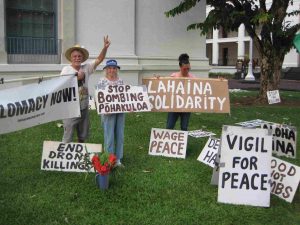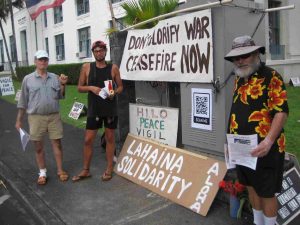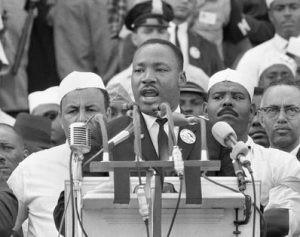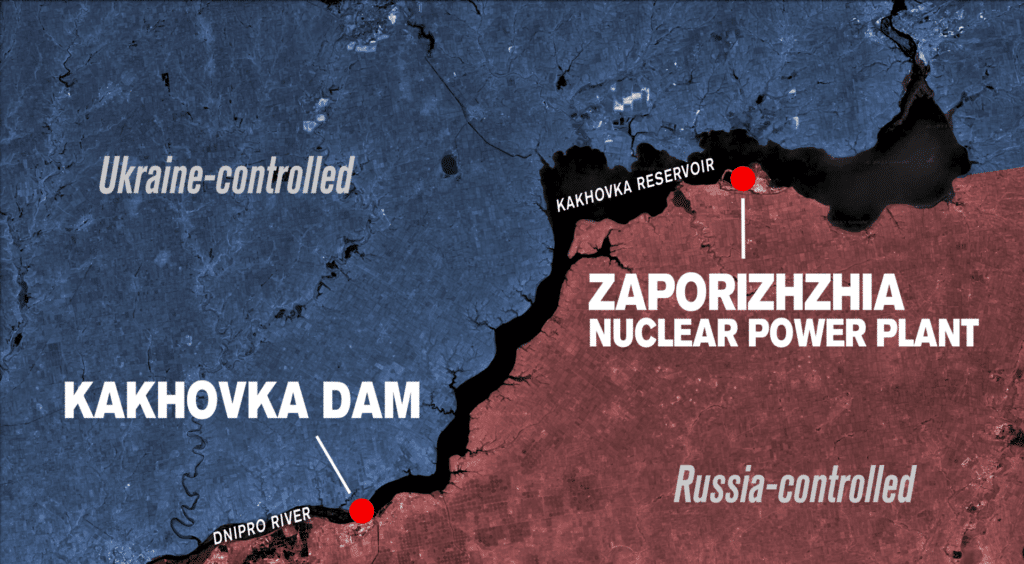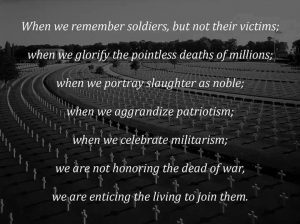Photos from the Sept. 1, 2023, Hilo Peace Vigil
Saturday, September 2nd, 2023Sept. 1, 2023, Hilo Peace Vigil, every Friday — 3:30-5 PM at the downtown Hilo Post Office– week 1144 — that marks 22 years. Next week starts year 23. Please view photos from today’s peace vigil and today’s peace leaflet. Each week I write a new leaflet available on www,malu-aina.org or via email. Send a request to be put on our email list if you would like to receive the leaflet automatically.
There is Still Hope!
Amid the Sad State of Affairs in Hawaii, the USA, and the World!
It’s been sixty years since the Rev. Martin Luther King, Jr. gave his famous “I Have a Dream” speech at the Lincoln Memorial in Washington, D.C. It is time that we all begin to live that dream if the world is to survive. We all need to become part of a grassroots, local and global, movement for justice, peace, and a livable planet. In my view, the US Empire is the greatest threat to peace on the planet. The ruling elite wants to remain the global empire in a unipolar, not multi-polar, world. Positive action will not come from the top down. We must organize from the ground up. Get involved. Now!
In Maui, wildfire deaths and destruction are tragic symptoms of a global ecosystem dangerously out of balance. In Hawaii, the illegal US military occupation and corporate domination have abused and polluted the land, and priced Hawaiians out of paradise – their homeland and nation.
Former US President Donald J. Trump is facing 91 felony charges. Many of his enablers are facing charges too. Eight Republicans were in the recent televised Presidential Debate that Trump skipped. What a bunch of pathetic clowns and a tragic statement about the state of America. A cloud of corruption is hanging over Joe Biden and his family too. That doesn’t help to make matters better. And the US under Biden, and his war crime advisors like Antony Blinken, Victoria Nuland, and Elliott Abrams, is continuing its proxy war to weaken Russia and topple Putin. The US is destroying Ukraine killing hundreds of thousands of Ukrainians and Russians, and threatening global nuclear war on top of increasingly visible man-made climate change catastrophe with record heat, fires, storms, and flooding.
Tragic Statistics!
– US post-9/11 wars caused 4.5 million deaths, and displaced 38-60 million people, a Brown University study shows https://www.informationclearinghouse.info/57769.htm
– 2024 Fiscal Year US Budget: 64.5% for the Military and 35.5% for Everything Else.
In addition, the US plans to spend $1.7 TRILLION to modernize its massive nuclear weapon arsenal.
– There have been 476 mass shootings in the US so far in 2023 – in schools, stores, at football, baseball games, festivals, etc. places where people are supposed to be enjoying life, not facing death.
“The arc of the moral universe is long, but it bends toward justice.”MLK
1 . Mourn all victims of violence. 2. Reject violence & war as solutions. 3. Defend civil liberties.
4. Oppose all discrimination: anti-Islamic, anti-Semitic, anti-Hawaiian, anti-Black, anti-Asian, anti-Russian, anti-LGBTQ, etc. 5. Seek peace through peaceful means and work for justice in Hawai`i and around the world.
Malu ‘Aina Center for Non-violent Education & Action
P.O. Box 489 Ola’a (Kurtistown), Hawai’i 96760
Phone (808) 966-7622 Email ja@malu-aina.org to receive our posts.
For more information see http://www.malu-aina.org
September 1, 2023, Hilo Peace Vigil leaflet – week 1144– Fridays 3:30-5 PM downtown Post Office
